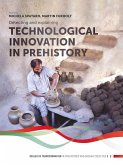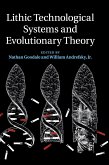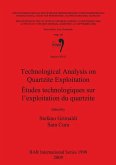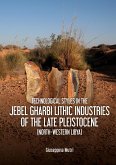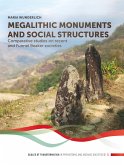Technology refers to any set of standardised procedures for transforming raw materials into finished products. Innovation consists of any change in technology which has tangible and lasting effect on human practices, whether or not it provides utilitarian advantages. Prehistoric societies were never static, but the tempo of innovation occasionally increased to the point that we can refer to transformation taking place. Prehistorians must therefore identify factors promoting or hindering innovation.
This volume stems from an international workshop, organised by the Collaborative Research Centre 1266 'Scales of Transformation' at Kiel University in November 2017. The meeting challenged its participants to detect and explain technological change in the past and its role in transformation processes, using archaeological and ethnographic case studies. The papers draw mainly on examples from prehistoric Europe, but case-studies from Iran, the Indus Valley, and contemporary central America are also included. The authors adopt several perspectives, including cultural-historical, economic, environmental, demographic, functional, and agent-based approaches.
These case studies often rely on interdisciplinary research, whereby field archaeology, archaeometric analysis, experimental archaeology and ethnographic research are used together to observe and explain innovations and changes in the artisan's repertoire. The results demonstrate that interdisciplinary research is becoming essential to understanding transformation phenomena in prehistoric archaeology, superseding typo-chronological description and comparison.
This book is a scholarly publication aimed at academic researchers, particularly archaeologists and archaeological scientists working on ceramics, osseous and metal artefacts.
Hinweis: Dieser Artikel kann nur an eine deutsche Lieferadresse ausgeliefert werden.
This volume stems from an international workshop, organised by the Collaborative Research Centre 1266 'Scales of Transformation' at Kiel University in November 2017. The meeting challenged its participants to detect and explain technological change in the past and its role in transformation processes, using archaeological and ethnographic case studies. The papers draw mainly on examples from prehistoric Europe, but case-studies from Iran, the Indus Valley, and contemporary central America are also included. The authors adopt several perspectives, including cultural-historical, economic, environmental, demographic, functional, and agent-based approaches.
These case studies often rely on interdisciplinary research, whereby field archaeology, archaeometric analysis, experimental archaeology and ethnographic research are used together to observe and explain innovations and changes in the artisan's repertoire. The results demonstrate that interdisciplinary research is becoming essential to understanding transformation phenomena in prehistoric archaeology, superseding typo-chronological description and comparison.
This book is a scholarly publication aimed at academic researchers, particularly archaeologists and archaeological scientists working on ceramics, osseous and metal artefacts.
Hinweis: Dieser Artikel kann nur an eine deutsche Lieferadresse ausgeliefert werden.


